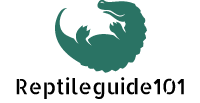Bearded Dragons get their name from their ability to “puff out” a throat pouch that has prominent spikes formed from modified scales.
This “beard” can also change color, becoming jet black and even more impressive. Beards are not limited to males; the females will show off their beards as well, in a very interactive communication. Indeed, bearded dragons are very social animals.
They have a rich gestural language, bobbing their heads at one another, gaping their mouths, flattening their bodies and tilting as they circle one another swishing their tails, using their tongue to check each other or their environment out, etc.
They even have a variety of submissive gestures. For instance, both sexes will raise one arm and hold it stationary or slowly wave it in circles, evidently to signal “hey, it’s ME, stop harassing me, I’m harmless!” They rapidly establish a hierarchy and adapt to their caretakers, so the more extreme aggressive gestures become rare in captivity (unless you give them new territory to conquer). They are very curious and love being let out to investigate.
Some dragons can recognize humans’ clumsy attempts at their body language. My male adolescents become excited if I extend my hand with fingers held together and pointed, to mimic a dragon head, and then “bob” my mock-dragon head.
They will often bob right back. However, they will become quiet and assume a satisfied “I am dominant” pose if I then circle my thumb at them to mimic submission. I initially suspected that my dragons responded to my signals only because I had trained them. I tested this hypothesis during a visit to the San Diego Zoo, which has a large outdoor habitat for beardeds. During my visit, several dragons were sunning themselves and ignoring human gawkers.
After surreptitiously assuring myself that no one was looking, I began a “bobbing” display with my hand. Instantly, dragon heads turned toward me. The closest dragon ran a few steps toward me and bobbed his head. I bobbed in return. He advanced and bobbed more emphatically. I bobbed back. He ran closer and bobbed with such an amplitude that his chin hit the ground.
I pointed my hand somewhat downward and slowly moved my thumb in a circle. He bobbed once (which I translated as a “So, there!” gesture), turned sideways to me and raised his head in the “I am supreme!” gesture. I concluded that I can speak dragon! Well, at least in pidgin form.
One of the joys of caring for this species is its mellow but interactive nature. Beardeds appear to communicate with us, at least in broad terms. Long, piercing stares are apparently designed to transmit the mental message “feed me crickets…. crickets…. crickets….” Although they will interact with you, they show their full social repertoire only to one another, an argument for keeping more than one dragon.
If your dragon has a buddy, you will be able to enjoy a full behavioral series as they set up and maintain a dominance hierarchy. You will see “lizard stacks” as they pile up on one another beneath their basking light.
If you have a male and female, you will see mating displays (and mating). Sometimes however, interactions become aggressive, and such individuals require separate quarters. If you have two dragons together and one stops eating, likely he has been intimidated and will require special feeding, or even different quarters.
Do not house dragons together if they differ dramatically in size. One could furnish lunch for the other…. Indeed, if you plan on acquiring a companion for your pet, make provision in case they do not get along; They may need separate quarters!
As their name also indicates, bearded dragons originate in Australia. Of the 7-8 Australian dragon species, those in captivity are predominantly Pogona vitticeps (up to a few years ago, called Amphibolurus vitticeps).
They have not been (legally) exported from Australia for years. Virtually all those available are captive bred, originating from stock that entered the USA from Germany. They breed readily (even eagerly) in captivity and the eggs hatch well with proper incubation. Captive bred stock is healthier than wild-caught, is often parasite-free, and does not disturb natural populations. Captie breeding has produced a number of different color “morphs”, all of whom are still of the same species.
The captive populations are currently robust and birth defects are rare, but the gene pool is so small that this happy situation may not continue long. An early sign of inbreeding is loss of full size. If you want to breed dragons, avoid inbreeding: ask your breeders what line they have (mine are the hearty “German” stock) and trade to get new bloodlines.
If you bought two dragons from the same tank in a pet store, they are most likely siblings. Breeding them will be breeding brother to sister.
If you sell the progeny to a pet store, someone else will buy–and breed- siblings. Since deficits are seen in the first generation of such breeding, this practice will quickly reduce the genetic health of American-bred dragons!
